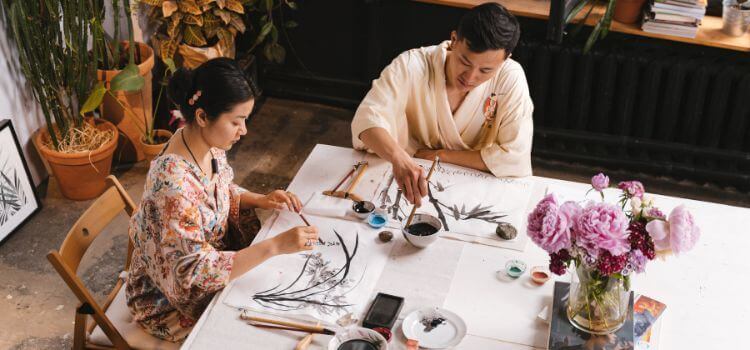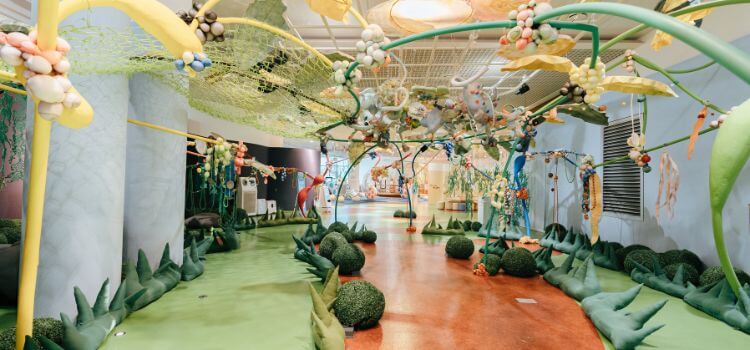Painting with flowers is a creative and fun way to express yourself. From vibrant hues of pink and yellow to muted shades of greens and blues, flowers can provide you with an endless array of colors to work with. With a few simple steps, you can make your own paint from fresh flowers and use it to create beautiful and unique works of art. In this post, we’ll walk you through the simple steps of how to make paint from flowers, as well as some tips and tricks to help you get the most out of your flower-based paints. Let’s get started!
Best 10 Methods How to Paint from Flowers
Painting from flowers can be a fun and creative way to express yourself. Whether you’re a beginner or an experienced painter, creating beautiful works of art from flowers can be a rewarding experience. In this post, we’ll explore 10 unique methods to help you create stunning works of art from flowers. From color theory to shading techniques, we’ll cover everything you need to know to get started. So grab your supplies and let’s get started creating beautiful flower paintings!
1. Choose the Right Subject
If you’re looking to make a beautiful painting from flowers, it’s important to know what type of flower you’re using. Different flowers have different colors, shapes, and textures, so you want to make sure you’re using the best flower for your painting. Consider the colors, shape, and size of the flowers, and how they will look on the canvas.
For example, if you’re painting a portrait of a loved one, you may want to choose a particular type of flower that you associate with that person. Once you’ve chosen the right subject, you can start gathering your materials. Gather your paint, brushes, canvas, and of course, the flowers you plan to use for the painting.
2. Pick Out the Right Colors
Choosing the right colors for your painting is just as important as choosing the right subject. Consider the colors of the flowers you’ve chosen and how they will look together. If you’re painting a still life, look at the surrounding colors in your image and choose a color palette that will complement them. Try to keep the colors bright and vibrant, but don’t be afraid to experiment. If you want to add a pop of color to the painting, choose a bright hue that stands out against the others. You can also mix and match colors to create a unique look.
Try mixing colors that you wouldn’t normally think of, such as pink and purple, or yellow and green. Whichever colors you choose, remember to keep it simple and stay within the same color palette.
3. Identify the Overall Composition
is an essential part of painting a still life. A good composition will draw the viewer in and give the painting an overall balanced and pleasing look. To create a good composition, consider the placement of the objects in the painting, the colors of the objects, and the overall shape of the painting. Start by looking at the surrounding colors in the image and then choose a color palette that will complement them. The colors should be bright and vibrant but don’t be afraid to experiment with colors you wouldn’t normally think of. You can also mix and match colors to create a unique look.
When you’ve finished, step back and look at your work to make sure it has a balanced composition. If not, adjust the colors or objects to achieve the desired effect. A well-balanced composition will make your painting look complete and professional.
4. Sketch Out the Basic Shapes
to begin your painting project. Start by looking at the image and decide if it needs to be broken down into a few basic shapes. This will help you to create a more unified and balanced composition. To create the shapes, use either a pencil or a light-colored marker to visualizethe basic shapes and layouts. Once you have created the basic shapes, refine them by adding more details. Pay attention to the shapes and angles of the lines to make sure they are consistent and are going in the desired direction. Then start adding colors that complement each other.
Remember to always experiment with bright and vibrant colors. Once the colors are applied, step back and look at your work. Make sure that the composition is balanced. If not, adjust the colors or objects to achieve the desired effect. A well-balanced composition will make your painting look complete and professional.
5. Develop the Value of the Image
After you have painted in the colors, it is time to develop the value of the image. You will need to adjust the brightness and darkness of the colors and objects in the painting. The most important part of this process is to create contrast. Contrast will make the colors and objects stand out, creating the illusion of depth and perspective. When you are done, take a step back and evaluate the painting.
Make sure that the light and dark areas balance each other out. If one area is too bright or too dark, adjust it until a nice balance is achieved. Doing this will bring the painting to life and create a sense of depth.
6. Define the Edges of the Petals
is an important step in creating a successful painting. Edges create contrast and help the viewer to visually distinguish between different objects. In the case of petals, the edges will be slightly raised, allowing the viewer to create the illusion of depth. To define the edges of the petals, use a brush with a fine tip and apply a light layer of paint. Make sure to use a consistent pressure to keep the edges from looking too sharp. You can adjust the darkness and brightness of the edges to make the petals look more realistic. When you are done, take a step back and evaluate the painting. Make sure that the light and dark areas balance each other out. If one area is too bright or too dark, adjust it until a nice balance is achieved. Doing this will bring the painting to life and create a sense of depth.
7. Create the Details of the Petals

to complete the painting. You should start by using a brush with a fine tip and apply a light layer of paint to define the edges of the petals. Make sure to apply the paint with a consistent pressure to keep the edges from looking too sharp or jagged. You can adjust the darkness and brightness of the edges to give the petals more of a realistic look. When you are finished with the petals, take a step back and evaluate the painting
8. Bring out the Highlights
of the Painting. Once you have the basic shape of the petals complete, you should now move on to bringing out the highlights. This is the process of darkening and lightening certain areas of the painting to create depth and contrast. Start by identifying the areas of the painting that you would like to make brighter or darker. Once you have identified those areas, you can use a variety of techniques to make them brighter or darker. For example, you can use a lightening and darkening brush or a layering technique.
The goal is to make the highlights visible and to create a sense of depth. You can adjust the darkness and brightness of each area until you achieve a nice balance. When you have the highlights just right, the painting will come to life!
9. Add the Background
to the painting to create a sense of depth and contrast. This can be done by darkening and lightening certain areas of the painting. Start by identifying the areas that you would like to make brighter or darker. You can do this by looking at the painting and deciding which areas you want to bring out or bring down. Once you have identified these areas, you can use a range of techniques to make them brighter or darker.
Lightening and darkening brushes can be used, or you can use a layering technique to make the highlights visible. You can adjust the darkness and brightness until it looks just right. This will bring the painting to life and make it look more interesting and realistic. With a bit of practice, you can produce a great looking painting with the use of backgrounds.
10. Final Touches and Details
are the most important step in creating a beautiful painting. Once you have finished painting your masterpiece, you should look at the painting and decide what areas need to be adjusted. You may need to focus on different areas such as the colors, shadows, highlights, and background. You may want to darken or lighten certain areas, which can be done with lightening and darkening brushes. You can also use a layering technique to make certain areas more prominent.
Be sure to take your time and make subtle adjustments until you are satisfied with the final look. Once you are done with the painting, you can add a few finishing touches such as adding texture or other elements to the painting. With careful attention to detail, you will be able to create a beautiful painting that looks realistic and professional.
Conclusion
Making paint from flowers is a fun, creative way to make art. You can use fresh or dried flowers, depending on the desired effect. To make the paint, you’ll need to mix the flowers with a liquid medium and a binder. Once you’ve created the paint, you can use it to create unique works of art. With patience and practice, you can become an expert at making paint from flowers and create beautiful, vibrant works of art.
Frequently Asked Questions
You can use any kind of flower that you like, but the best kinds are those that have a lot of color, such as pansies, petunias, and daisies.
You can either crush the petals and mix them with water, or you can steep them in hot water for a few hours.
You will need a container to mix the paint in, a paintbrush, and a strainer. You will also need some type of binder, such as egg whites, honey, or flour.
The paint will last for several days, depending on the type of binder you use. If you use a natural binder such as honey or egg whites, the paint may not last as long.
You can use the paint on almost any type of surface, including paper, wood, and canvas.
If the paint is too thick, you can add a few drops of water to thin it out.
Make sure to wear gloves when handling the flowers, as some of them may cause skin irritations. Additionally, make sure to store your paint in a cool, dry place away from direct sunlight.

